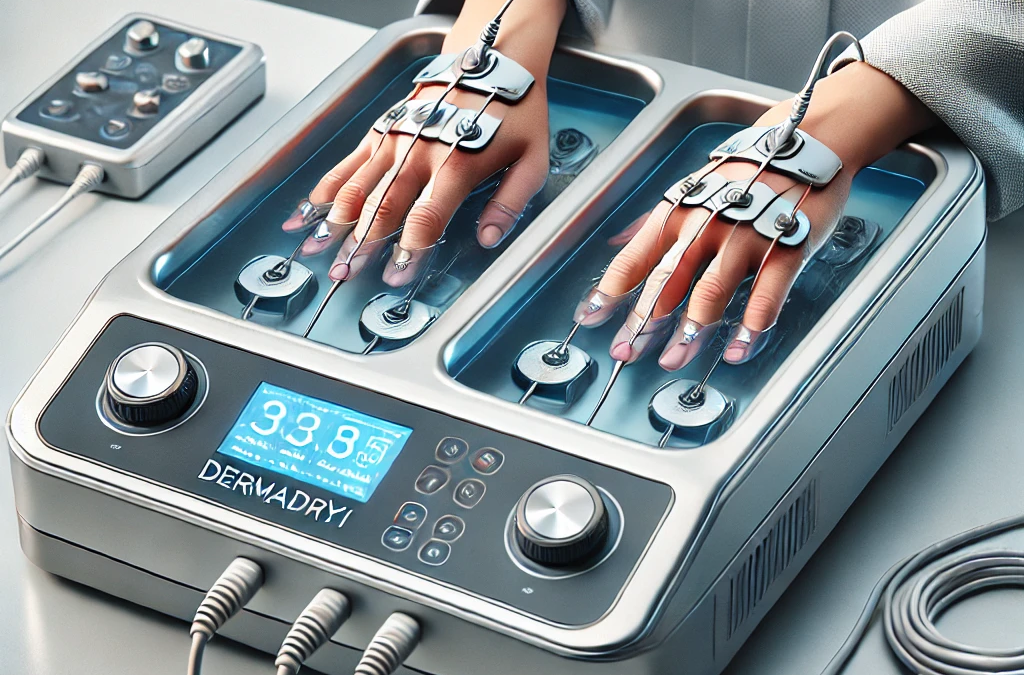Iontophoresis is an innovative, non-invasive therapy used to manage pain, reduce inflammation, and treat various chronic conditions. This treatment involves delivering medications directly through the skin using a mild electrical current. Unlike oral or injectable drugs, iontophoresis provides targeted relief to specific areas of the body, minimizing systemic side effects and improving the effectiveness of the therapy. Its growing popularity in physical therapy and pain management highlights its versatility and efficiency in addressing a range of medical issues.
The Mechanism of Iontophoresis
The science behind iontophoresis lies in its ability to transport ionized medications through the skin barrier into the tissues beneath. During treatment, two electrodes are placed on the skin: one contains the prescribed medication, and the other serves as a grounding electrode to complete the electrical circuit. When a weak electrical current is applied, it propels the medication into the affected area.
This method is particularly effective for medications that reduce inflammation, such as dexamethasone, or anesthetics like lidocaine that provide temporary pain relief. It can also be used for other specialized purposes, such as dissolving calcium deposits in soft tissues using acetic acid. The localized delivery ensures that the medication reaches the specific site of injury or discomfort, offering precise and efficient treatment.
Conditions Treated with Iontophoresis
Iontophoresis is widely used to treat a variety of musculoskeletal and chronic conditions. It is particularly effective in managing tendinitis and bursitis, which involve inflammation of tendons or bursae. These conditions often result from overuse or repetitive stress and can significantly impair mobility and quality of life. By reducing inflammation and pain, iontophoresis promotes healing and allows patients to regain normal movement.
The therapy is also used to treat plantar fasciitis, a condition characterized by pain in the heel and arch of the foot caused by inflammation of the plantar fascia. Iontophoresishelps alleviate discomfort and accelerates recovery. Another application is in treating calcific tendinitis, where calcium deposits in tendons cause pain and limit movement. In these cases, the therapy aids in breaking down calcium deposits and reducing symptoms.
The Iontophoresis Treatment Process
A typical iontophoresis session is simple, efficient, and generally well-tolerated by patients. Before the treatment begins, a healthcare provider cleans the area to be treated and places the electrodes on the skin. The medicated electrode is positioned over the affected area, while the other electrode is placed nearby to complete the circuit. A low electrical current is then applied, which many patients describe as a tingling or warm sensation. The process is usually painless, and each session lasts between 10 and 20 minutes.
After the session, the electrodes are removed, and the skin is checked for any signs of irritation, which are typically minor and temporary. While some patients may notice immediate relief, multiple sessions are often necessary to achieve optimal results, depending on the severity of the condition being treated.
Advantages of Iontophoresis
One of the primary benefits of iontophoresis is its non-invasive nature. Unlike injections or oral medications, it does not require needles or ingestion, making it a more comfortable option for patients. The therapy provides highly localized treatment, delivering medication directly to the affected area without exposing the entire body to the drug. This tends to reduce the risk of side effects, such as gastrointestinal upset or adverse drug reactions.
Another advantage is its customizability. Healthcare providers can adjust the electrical current and medication dose to suit individual patient needs, ensuring a personalized approach. Sessions are also quick and convenient, making iontophoresis a practical choice for patients with busy schedules.
Safety and Considerations
While iontophoresis is generally safe, it may not be suitable for everyone. Patients with certain conditions, such as pacemakers, implanted electrical devices, or metal implants near the treatment site, should avoid this therapy. It is also not recommended for individuals with open wounds, skin infections, or hypersensitivity to electrical currents. Pregnant individuals should consult their healthcare provider to determine the safety of iontophoresis for their condition.
Although rare, some patients may experience mild skin irritation, redness, or itching at the electrode site. These side effects are usually temporary and can often be resolved by adjusting the treatment settings or using protective barriers.
Iontophoresis as Part of a Comprehensive Treatment Plan
Iontophoresis is most effective when integrated into a broader rehabilitation plan. Physical therapists often combine it with other therapeutic modalities, such as manual therapy, stretching exercises, and strength training, to optimize recovery. While iontophoresis provides significant pain relief and inflammation reduction, it is not a standalone solution. Active participation in rehabilitation and adherence to prescribed exercises are essential for long-term improvements and prevention of future injuries.
The Bottom Line
Iontophoresis is a cutting-edge, non-invasive method for managing pain and inflammation. Its ability to deliver medication directly to the site of injury or discomfort makes it an attractive option for treating a wide range of conditions. The therapy’s precision, safety, and convenience have made it a popular choice among healthcare providers and patients alike.

